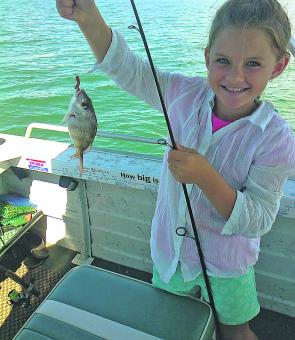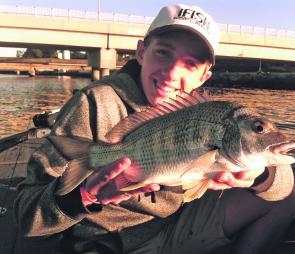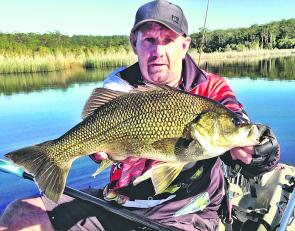This is the time of year that anglers get to enjoy beautiful crisp mornings, cloudless days and cool westerly winds blowing off the land. The rains earlier this year did the fishing world a huge favour by delivering several deluges; it has provided an awesome platform for the fishing over the past few months, which is set to continue throughout this winter.
The rains provided us with new ecosystems in the Northern Bay by flushing bait and smaller fish out the estuaries and tributaries and seek new homes around more saline waters, such as river mouths and creek entrances. This has caused medium-sized predators like bream, flathead, whiting, and mullet, to hang around these areas feeding on the Newfoundlanders. In turn, this leads to even bigger predators such as snapper, mulloway, mangrove jack, tailor, and tuna, to join in the party.
Use this information to find fish in your local corner of the Northern Bay. Take the time to think of the area you are attacking (water depths, tidal flow, bait presence) and try to think where the fish would be schooling and feeding. It will help you produce better results when heading out this time of year.
Juvenile snapper have been the number one hit on everyone’s list as numbers have been healthy over the last few months. Northern reefs around Scarborough, the southern end of the green zone at Woody Point and the mouth of the Brisbane River have been producing the healthy legals throughout the dusk and dawn bite periods. Equal favourites have been shared between soft plastics and baits; some anglers are starting out with plastics early when light is low and switching to baits as the sun gets brighter and the bite gets a little tougher.
Bream numbers have been great this month with their annual spawn well and truly underway. Pumicestone Passage has fished better on the flooding tide as ravenous spawners have been seeking replenishment in the early mornings. Be sure to try areas like Ningi and Donnybrook flats, Cooks and Tiger Rocks and White Patch on the high tide and retreat to the creek mouths as the tide recedes and the sun gets higher in the sky.
Redcliffe’s breaming activity has been great with anglers producing better catches at dawn and dusk and on the making tides. This is prime time to chase bream in shallower waters as they tend to cruise in packs of 5-6 rounding up baitfish in the shallows and ambushing them.
Areas also worth a try around the peninsula include both sides of Woody Point Jetty, Shields St Reef, Queens Beach, the Wells and of course the ever trusty North Reef.
Winter whiting have also kept anglers happy in the Northern Bay with fishos being rewarded with healthy numbers for their time spent on the water. The Cockle Banks of Bribie, Deception Bay and around the Compass Adjustment Buoy have been the pick of the hotspots with anglers finding drifting through these areas more fruitful than anchoring up.
Bloodworms have been the best bait from all accounts with some fishers resorting to thin squid strips or even peeled green prawns when worm stocks have been depleted.
Good numbers of tailor have been ripping through bait schools of late. These schools have been prominent throughout the Redcliffe Peninsula and along the reclaimed area of the Brisbane River. Using whitebait or pilchard halves have been popular amongst the baitos. The 3” Plazo Jerk minnows, 4” Z-Man Streakz and 3” Gulp Minnows are the pick of the soft plastics.
The ever present stalwart of our waterways, the immortal flathead, have been increasing in numbers throughout the river systems as the bigger females move into their winter spawning cycle. The Pine River has produced good fish of late with Dohles Rocks, mouth of Bald Hills Creek and the lower reaches around to Hays Inlet producing good keepers.
Fresh baits have definitely been the most fruitful. Slender shad style hardbody lures around the 50mm mark are also making an impact with notables being Bassday Sugar Deep 70SP, Ecogear MW62F, Atomic Shiner 45 and Cranka Shalllow Minnow 59.
Be sure to keep an eye on your legal lengths for flathead this time of year. The maximum of 75cm is in place to protect breeding females to ensure the longevity of our local stocks.
Reads: 1962
Emily Thompson of Petrie caught her first juvenile snapper on dad's new boat.

Jesse Gough with a solid Redcliffe Peninsula bream.

Rhoul Pendergast with a great bass from the upper reaches of the Pine River.




